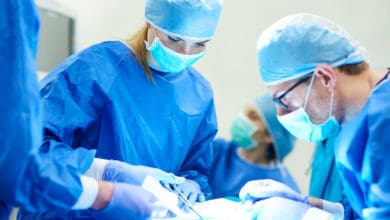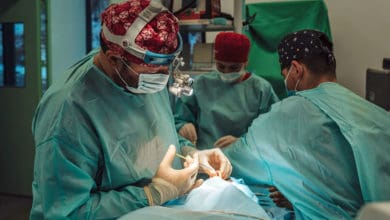If you want a career as a diagnostic radiologist, here is how competitive the medical specialty is to match into a diagnostic radiology residency. Diagnostic Radiology is the branch of medicine that involves the use of medical imaging, such as x-rays, CT-scans and MRI to diagnose and sometimes treat a patient.
Statistics on the Diagnostic Radiology Match
As of the most recent NRMP data, diagnostic radiology had a total of 1,232 applicants and 1,146 spots. This equates to 1.08 applicants per position. Of the 911 U.S. MD seniors who applied, 153 did not match.
| Total Positions | Total Number of Applicants | Number of Applicants per Position |
| 1,155 | 1,568 | 1.36 |
Osteopathic (DO) Students Matching into Diagnostic Radiology
The total number of DO Senior Applicants was 253. Of those, 169 matched, for a 66.80% match percentage. This makes diagnostic radiology a medium friendly field for osteopathic students.
| Total DO Applicants | Matched DO Applicants | DO Match Percentage | |
| 253 | 169 | 66.80% |
International Medical Graduates (IMGs) Matching into Diagnostic Radiology
Because there are only 0.79 U.S. MD applicants per 1 program spot, diagnostic radiology is considered to be Friendly for IMGs students.
Honors, Research and Awards for Diagnostic Radiology Residency Candidates
The average matched U.S. applicant had 6.9 volunteer experiences and 3.3 work experiences. They had 3.8 research experiences and 6.4 abstracts, presentations and publications. That makes this specialty on where the number of publications needed is Medium.
| Research Experiences | Abstracts, Presentations and Publications | Work Experiences | Volunteer Experiences |
| 4.6 | 8 | 3.2 | 7.2 |
Average Step 2 Scores for Diagnostic Radiology
The mean USMLE Step 2 CK score was 253. The overall competitiveness level of diagnostic radiology is Medium for a U.S. senior.
How long is a residency in diagnostic radiology? What is the lifestyle like for a diagnostic radiologist resident?
Compared to other residencies, diagnostic radiology has a Long training length. As far as lifestyle, diagnostic radiologists generally have a Low stress lifestyle. Of course, lifestyle is very subjective and if you love what you do, it does not matter! And if you hate what you do, it can still be rough no matter what. In medicine, you should find the specialty that makes you enjoy your everyday interactions with patients, staff and colleagues.
What is the average salary for of a diagnostic radiologist?
The average salary post-graduation from a diagnostic radiology residency is $427,000, provided one does not go on to sub-specialty training which can change the salary substantially. Academic versus private practice as well as location also play a large role in physician compensation.
What are fellowships one can do from a diagnostic radiology residency?
Following the successful completion of general diagnostic radiology residency, some physicians may choose to continue their graduate medical education with subspecialty training. Board-certified subspecialists complete additional training and qualifying examinations beyond those required for board certification in diagnostic radiology. Currently, the American Board of Radiology certifies the following fellowships:
What are the best diagnostic radiology residencies in the country?
The best residency for diagnostic radiology, or any specialty, is very driven by personal preference and situation. How close you are to family, loved ones, the type of training environment, the opportunities available are all things to take into consideration above and beyond name recognition of a program. However, there are some highly regarded names in the world of diagnostic radiology including:
-
- MGH
- Stanford
- UPenn
- UCSF
- Johns Hopkins
- Washington University in St Louis
- Mayo Clinic
- NYU
- Brigham and Women’s Hospital
- Beth Israel Deaconess Medical Center
- Yale University
- Northwestern
Much of the data above is available from the AAMC Charting the Outcomes report.
FAQ: What Else Can I Learn About Diagnostic Radiology Residency?
Q: What makes diagnostic radiology an appealing specialty?
A: Diagnostic radiology is an appealing specialty due to its critical role in patient care, advanced technology use, and diverse practice areas. Radiologists are often referred to as the “doctor’s doctor” because they provide vital insights that guide diagnosis and treatment across all medical specialties. The field also offers excellent work-life balance and opportunities for subspecialization.
Q: How many diagnostic radiology residency positions are available each year?
A: Approximately 1,000 diagnostic radiology residency positions are available annually in the United States. While competitive, the field offers a range of programs at academic medical centers, community hospitals, and military institutions.
Q: Do I need research experience to match into diagnostic radiology?
A: Research experience, while not mandatory, can strengthen your application. Radiology programs value applicants with research in imaging technologies, medical physics, or disease-specific studies. Demonstrating an interest in advancing radiological science is highly regarded.
Q: How important are away rotations for matching into diagnostic radiology?
A: Away rotations can be helpful for gaining experience with different imaging modalities and showcasing your skills to potential programs. While not essential, they provide an opportunity to network, secure strong letters of recommendation, and learn about a program’s culture.
Q: What should I include in my personal statement for diagnostic radiology?
A: Your personal statement should highlight your interest in radiology, particularly any experiences with imaging, pattern recognition, or technology. Discuss how your skills, such as attention to detail and problem-solving, make you a strong fit for the field. Share specific examples of what drew you to radiology and your long-term career goals.
Q: What imaging modalities are most commonly used in diagnostic radiology?
A: Radiologists use a variety of imaging modalities, including X-rays, CT scans, MRI, ultrasound, and nuclear medicine. Each modality serves unique diagnostic purposes, such as visualizing bones, soft tissues, or metabolic activity within the body.
Q: What procedures do diagnostic radiologists typically perform?
A: Diagnostic radiologists primarily interpret imaging studies, but they may also perform procedures such as fluoroscopy, biopsies under imaging guidance, or contrast studies. Radiologists often collaborate with interventional radiologists for more complex, minimally invasive procedures.
Q: Are there opportunities for radiologists to focus on research?
A: Yes, radiology is a research-intensive field with opportunities in areas like artificial intelligence, imaging techniques, radiation safety, and disease-specific studies. Radiologists often collaborate with other specialties to improve diagnostic accuracy and patient outcomes.
Q: What subspecialties are available within diagnostic radiology?
A: Radiology offers numerous subspecialties, including:
– Neuroradiology: Imaging of the brain, spine, and nervous system.
– Musculoskeletal Radiology: Focused on bones, joints, and soft tissues.
– Pediatric Radiology: Imaging tailored to children.
– Cardiothoracic Radiology: Imaging of the heart and lungs.
– Abdominal Radiology: Focused on organs like the liver, kidneys, and intestines.
– Nuclear Medicine: Using radiotracers for imaging and treatment.
Q: What does the lifestyle of a diagnostic radiologist typically look like?
A: Diagnostic radiologists often enjoy a good work-life balance. They typically work in structured shifts, which reduces the need for long hours or unpredictable schedules. Teleradiology also allows for remote work opportunities, adding flexibility to the field.
Q: What innovations are shaping the future of diagnostic radiology?
A: Innovations in diagnostic radiology include artificial intelligence for image analysis, advanced imaging techniques like functional MRI and PET/CT, and improvements in radiation dose reduction. AI tools are increasingly used to enhance diagnostic accuracy and reduce radiologists’ workload.
Q: How does diagnostic radiology intersect with other medical specialties?
A: Radiologists work closely with nearly all medical specialties, including surgery, oncology, cardiology, and emergency medicine. Their expertise is essential for diagnosing conditions and guiding treatment plans. Collaborative efforts often involve tumor boards or multidisciplinary care teams.
Q: Are there fellowship opportunities after completing a diagnostic radiology residency?
A: Yes, radiology offers numerous fellowship opportunities in subspecialties such as neuroradiology, interventional radiology, musculoskeletal radiology, and breast imaging. Fellowships provide advanced training and prepare radiologists for specialized roles in academia or private practice.
Q: What role do diagnostic radiologists play in patient care?
A: Radiologists are integral to patient care, providing critical diagnostic information that guides treatment decisions. They interpret imaging studies, consult with referring physicians, and sometimes interact directly with patients during procedures like biopsies or contrast studies.
Q: What are the career opportunities for diagnostic radiologists?
A: Career opportunities for radiologists include working in hospitals, outpatient imaging centers, academic institutions, or private practice. They can also pursue roles in teleradiology, research, or administrative leadership. Radiologists often have the flexibility to balance clinical and non-clinical responsibilities.
Q: How do diagnostic radiologists ensure accuracy in their work?
A: Radiologists rely on advanced imaging technologies, pattern recognition, and clinical knowledge to ensure accuracy. They often double-check findings, collaborate with colleagues for second opinions, and use AI tools to assist in detecting abnormalities.
Q: How do I find shadowing opportunities with a diagnostic radiologist?
A: Reach out to radiology departments at hospitals or academic medical centers. Networking with faculty, advisors, or members of radiology interest groups can also help you connect with radiologists willing to provide shadowing experiences.
Q: What professional organizations can I join as a radiology student?
A: Students interested in radiology can join organizations such as the American College of Radiology (ACR), Radiological Society of North America (RSNA), and American Roentgen Ray Society (ARRS). These organizations provide educational resources, networking opportunities, and mentorship programs.
Q: How early should I start preparing for a career in diagnostic radiology?
A: Start early in medical school by excelling in coursework, particularly in anatomy and pathology, joining radiology interest groups, and seeking research opportunities in imaging. Clinical rotations in radiology and shadowing experiences are also vital for building a strong foundation in the field.
Did You Know?
- Diagnostic radiology was born with the discovery of X-rays:
The field of diagnostic radiology began in 1895 when Wilhelm Conrad Roentgen discovered X-rays, a breakthrough that revolutionized medical diagnosis. Within months, X-rays were being used to identify fractures and locate foreign objects, laying the foundation for modern imaging techniques.
- Radiologists interpret over 1 billion imaging studies annually in the U.S.:
Diagnostic radiologists play a critical role in modern healthcare, interpreting a staggering number of imaging studies each year, including X-rays, CT scans, MRIs, and ultrasounds. These images provide essential information for diagnosing and managing diseases across nearly every medical specialty.
- Radiology is at the forefront of AI integration in medicine:
Diagnostic radiology is one of the first medical fields to incorporate artificial intelligence (AI) into routine practice. AI algorithms are now being used to detect lung nodules, breast cancer, and brain bleeds with incredible accuracy, assisting radiologists in delivering faster and more precise diagnoses.
Explore Other Specialties:
| Specialty | Average Step 2 Score (Matched) |
|---|---|
| Anesthesiology | 246 |
| Child Neurology | 246 |
| Dermatology | 256 |
| Diagnostic Radiology | 249 |
| Emergency Medicine | 247 |
| Family Medicine | 238 |
| General Surgery | 249 |
| Internal Medicine | 248 |
| Internal Medicine/Pediatrics | 250 |
| Interventional Radiology | 255 |
| Neurological Surgery | 252 |
| Neurology | 245 |
| Obstetrics and Gynecology | 248 |
| Orthopaedic Surgery | 255 |
| Otolaryngology | 256 |
| Pathology | 242 |
| Pediatrics | 245 |
| Physical Medicine and Rehabilitation | 241 |
| Plastic Surgery | 256 |
| Psychiatry | 241 |
| Radiation Oncology | 250 |
| Vascular Surgery | 247 |



